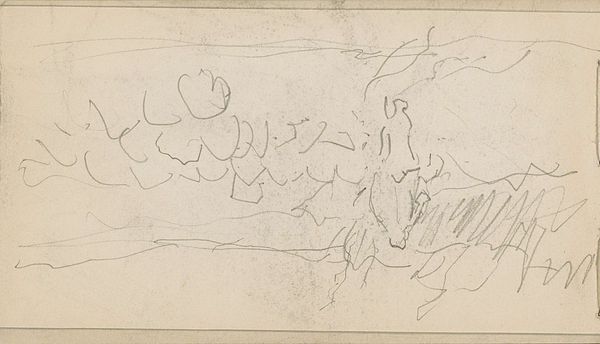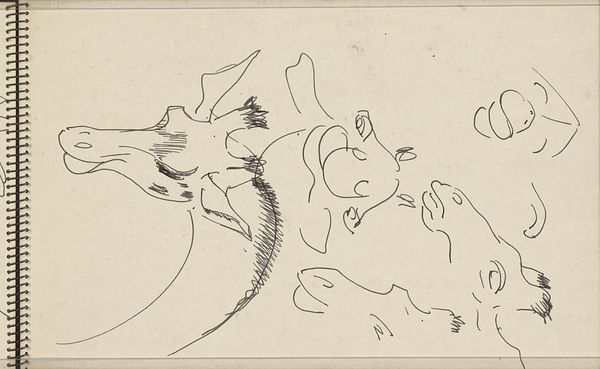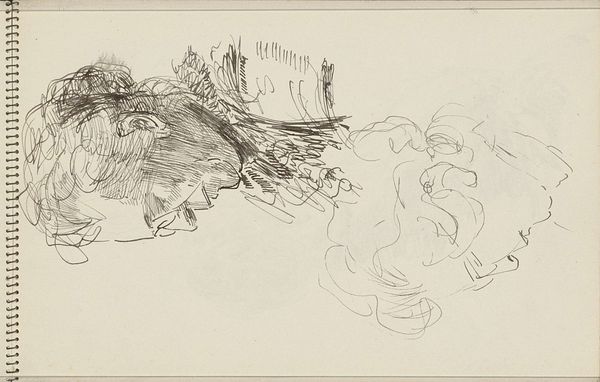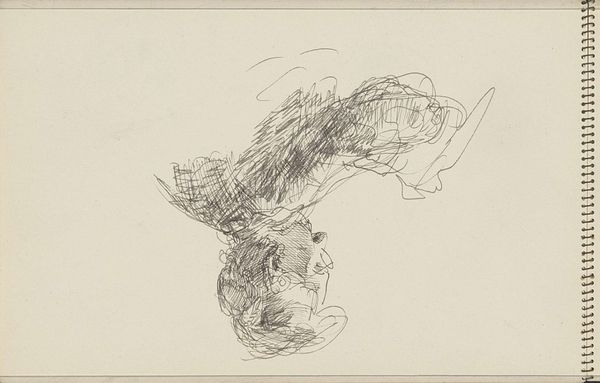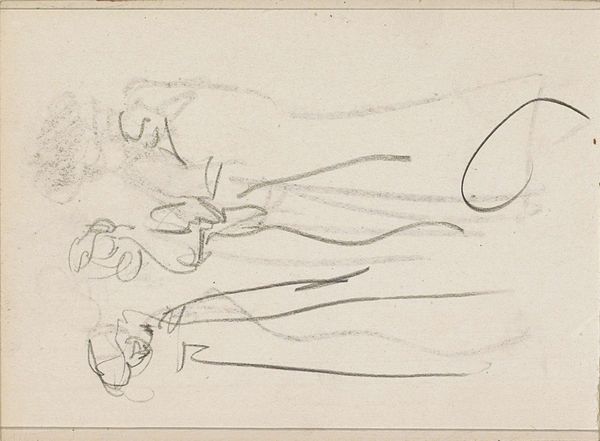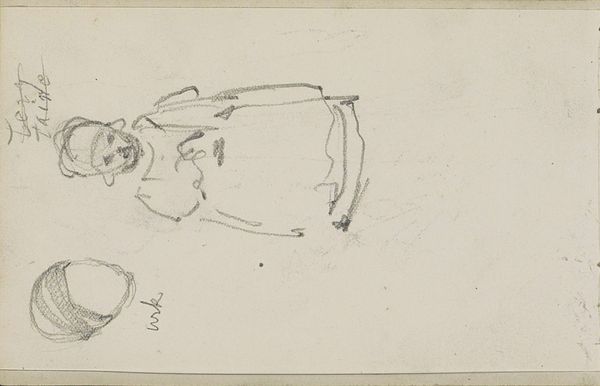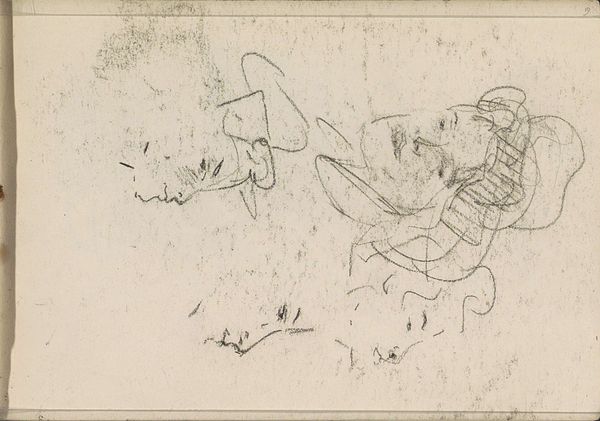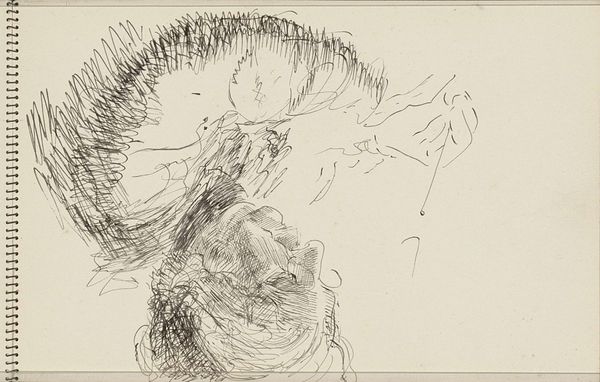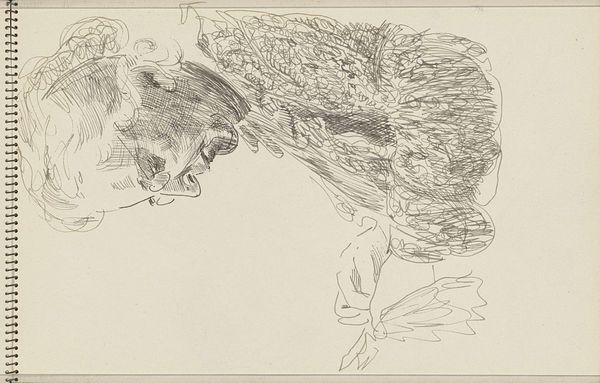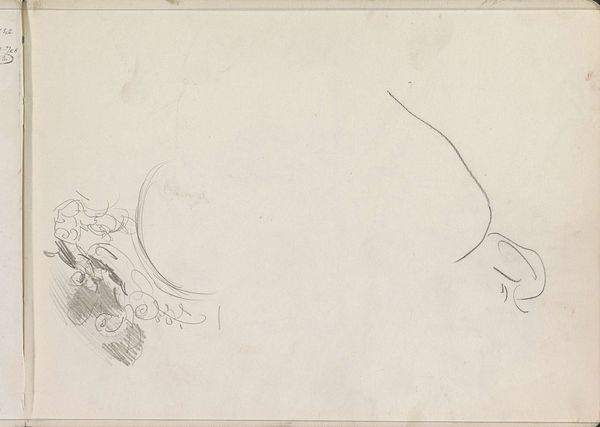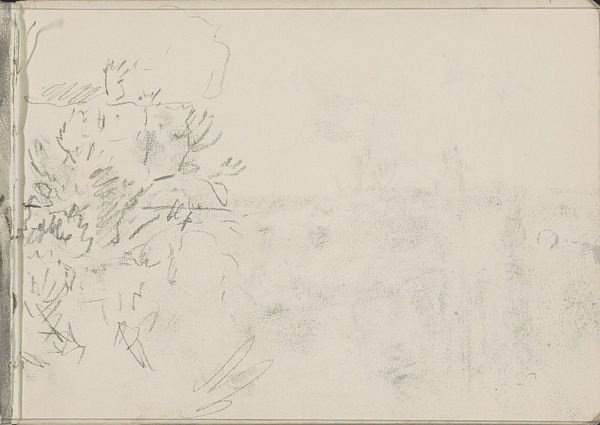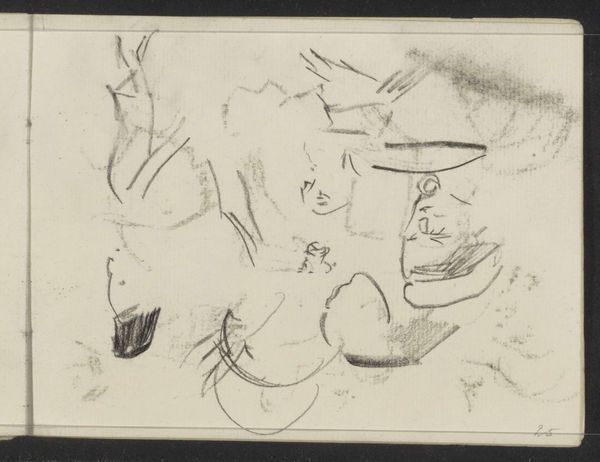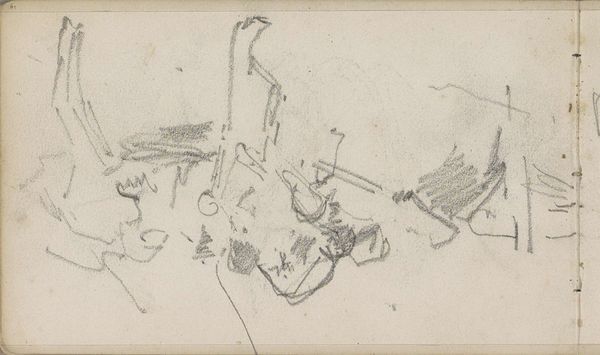
drawing, paper, pencil
#
portrait
#
drawing
#
toned paper
#
light pencil work
#
quirky sketch
#
pen sketch
#
pencil sketch
#
figuration
#
paper
#
personal sketchbook
#
sketch
#
pen-ink sketch
#
pencil
#
line
#
sketchbook drawing
#
sketchbook art
#
initial sketch
Copyright: Rijks Museum: Open Domain
Curator: Julie de Graag’s “Portretkoppen van Hanne en Hanna,” circa 1892, held here at the Rijksmuseum, strikes me as a glimpse into the artist's intimate world, rendered primarily in pencil on paper. What are your first thoughts? Editor: Immediately, I'm struck by the contrast. The starkly shaded head on the left, almost brooding, versus the delicate, almost ethereal one to its right, delineated with the lightest of pencil work. The textures create opposing moods, no? Curator: Absolutely. And it begs the question: What were the economic conditions that fostered a practice where intimate sketches on paper sufficed as explorations of character? What roles did Hanne and Hanna play in De Graag's life and work? Editor: It's hard to ignore the compositional choices here. The strong diagonals formed by the flowing lines of the figure on the right are balanced, perhaps precariously, against the almost aggressively shaded form opposite it. The orientation on the paper also allows it to be seen almost like an eye reading left to right. Curator: Precisely. Perhaps these initial impressions tell more than formal portraits ever could. Looking at the means of production, De Graag’s sketches offer insights into artistic practices and how relationships can be casually explored during periods of artistic creation. What significance might they hold, in terms of gender dynamics of the time? Did women of her period have certain privileges to show these intimate connections? Editor: I think analyzing the way De Graag captures the very essence of line and form in its rawest state is what elevates the portrait. These sketches have a structural eloquence that traditional portraiture could conceal beneath layers of pomp and circumstance. Curator: Right, there’s an accessibility to these works that traditional, formal paintings can lack. We see here De Graag at work, possibly in the moment. She presents two portraits to the audience where both are in separate states. One seemingly complete and the other an active and lively expression. Editor: It provides an intriguing visual language which resonates in modern settings still today, that moves past her production constraints as a woman. Curator: It’s in the balance between spontaneity and precision, where the sketches truly take on life, wouldn't you agree? Editor: I do. Ultimately it reminds us that even the simplest materials can give way to complex structural art.
Comments
No comments
Be the first to comment and join the conversation on the ultimate creative platform.
